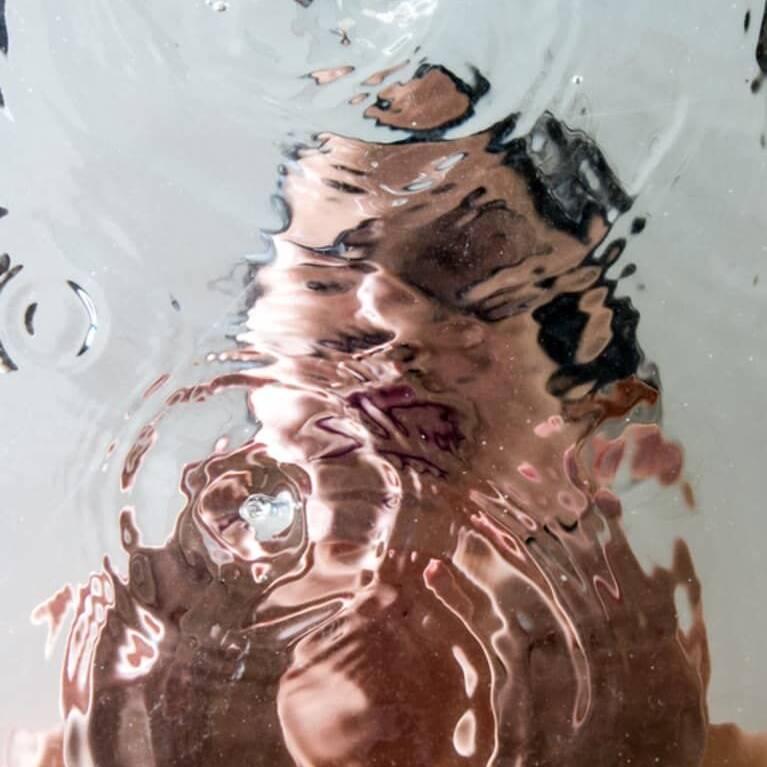Water fluoridation seems to be a widespread debate we have all heard. Let’s summarize the history, highlight some facts and talk about our options with water fluoridation and dental hygiene.
Light History Review
Fluoride naturally occurs in water; however, the amount varies in different locations. In 1901, Frederick McCay discovered residents in Colorado Springs, CO experienced brown stains on their teeth with no sign of tooth decay. Researchers found high levels of fluoride in their water, causing tooth discoloration but a strong tooth enamel. After their discovery, the experiential process to find the best dose of fluoridated water began. In 1945, Grand Rapids, Michigan, became the first city to partake in water fluoridation. Many cities have followed over the years.

bareskinfood.com
The Debate
The ADA lists five reasons water fluoridation should be looked at positively, including its ability to prevent cavities and tooth decay. The CDC stated that water fluoridation was one of the ten outstanding public health achievements in the 20th century.
However, there are some concerns when it comes to fluoride in our water.
According to Dr. Joseph R Nemeth, fluoride in water does not necessarily benefit adults. The only benefit we see with fluoridated water is during adolescent years when teeth are developing. Too much fluoride can harm our teeth as well. The CDC, AAP, AAPD, and ADA all recommend children only use pea-size amounts of fluoride toothpaste to prevent fluorosis. This disease forms due to overconsumption of fluoride, causing discoloration of the teeth.
Fluoride has the potential to create hidden problems in the pineal gland. The pineal gland’s primary function is to produce and send melatonin to the blood and brain fluid. Studies have shown that fluoride can reduce melatonin production, causing sleep cycle regulation and sleep behavior problems.
When an excessive amount of fluoride enters the thyroid gland, it can hinder its process. The thyroid gland is responsible for making sure the cells in your body are working “normally”. When exposed to high levels of fluoride, the thyroid gland’s function has the potential to be restrained. The relationship between fluoride and the thyroid gland is still an ongoing study.
Eliminating Fluoride?
Whether you want fluoridated water or not, the option is yours and your community’s. If you live in a city with fluoridated water, we have compiled a list of items you can purchase to reduce your intake:
- Water pitcher with a filter
- Water purifier for your faucet
- Shower filter/ water softener
- Reuseable water bottle with filter
- Reuseable straw with a filter
Pure Water Freedom is a great website to find filtered appliances, including most of the listed items above and more.
Out with Fluoride in with…
If you decide to reduce your fluoride intake but want to keep up with your dental hygiene, here are some tips we compiled for you:
- Floss daily
- Eat a balanced and nutritious diet
- Brush your teeth (at least twice) in the morning and before bed
- Partake in regular dentist check-ups
- Buy a metal tongue scraper
- Use an alcohol-free mouthwash

Overall, fluoride has advantages and disadvantages to our health. It is essential to remember overconsumption of anything can be harmful. Remember to always talk to your doctor before making a switch in your dental hygiene.
Are you switching to or from fluoridated water? Let us know why or why not in the comments and on our Instagram @cada_culture.
This article is for informational purposes only, even if and regardless of whether it features the advice of physicians and medical practitioners. This article is not, nor is it intended to be, a substitute for professional medical advice, diagnosis, or treatment and should never be relied upon for specific medical advice. The views expressed in this article do not necessarily represent the views of CADA.

